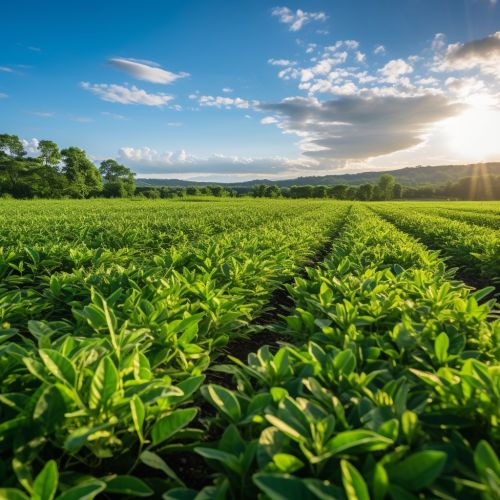Mechanisms of Plant Resistance to Pathogens
Introduction
Plant resistance to pathogens is a complex and multifaceted process that involves a variety of mechanisms. These mechanisms can be broadly categorized into pre-formed defenses, induced resistance, and systemic acquired resistance. Each of these categories encompasses a range of strategies and tactics that plants employ to fend off attacks from a variety of pathogens, including bacteria, viruses, fungi, and insects. Understanding these mechanisms is crucial for the development of effective strategies for plant disease management and crop improvement plant breeding.


Pre-formed Defenses
Pre-formed defenses are physical and chemical barriers that are present in plants even before the attack of pathogens. These defenses are constitutively expressed, meaning they are always present and do not require induction by a pathogen.
Physical Barriers
The first line of defense in plants is the physical barrier provided by the plant's surface structures. The cuticle, a waxy layer covering the outer surface of the plant, and the cell wall, a rigid structure surrounding each plant cell, are crucial components of this barrier. The cuticle provides a waterproof barrier that prevents the entry of waterborne pathogens, while the cell wall acts as a mechanical barrier that resists penetration by pathogens.
Chemical Defenses
In addition to physical barriers, plants also have a variety of chemical defenses at their disposal. These include antimicrobial compounds, such as phytoalexins and pathogenesis-related proteins, which are toxic to pathogens. Other chemical defenses include enzyme inhibitors, which can inhibit the enzymes produced by pathogens to facilitate their invasion, and reactive oxygen species, which can directly kill pathogens or signal the activation of other defense mechanisms.
Induced Resistance
Induced resistance refers to the defense mechanisms that are activated in response to pathogen attack. These mechanisms involve a complex network of signaling pathways that lead to the activation of defense genes and the production of defense compounds.
Recognition of Pathogens
The first step in induced resistance is the recognition of the pathogen. Plants have evolved a sophisticated system of pattern recognition receptors (PRRs) that can recognize pathogen-associated molecular patterns (PAMPs), which are molecules that are common to many pathogens. Upon recognition of PAMPs, the PRRs activate a signaling cascade that leads to the activation of defense responses, a process known as PAMP-triggered immunity (PTI).
Defense Gene Activation
The recognition of PAMPs leads to the activation of a variety of defense genes. These genes encode for proteins that are involved in various defense responses, including the production of antimicrobial compounds, the strengthening of the cell wall, and the production of signaling molecules that activate other defense responses.
Hormonal Signaling
Hormonal signaling plays a crucial role in the activation of induced resistance. Two key hormones involved in this process are salicylic acid (SA) and jasmonic acid (JA). SA is involved in the defense against biotrophic pathogens, which derive their nutrients from living plant cells, while JA is involved in the defense against necrotrophic pathogens, which kill plant cells to derive their nutrients.
Systemic Acquired Resistance
Systemic acquired resistance (SAR) is a type of induced resistance that provides long-lasting, broad-spectrum resistance to a variety of pathogens. SAR is activated by a localized infection and confers resistance to the entire plant, including parts that were not initially infected.
SAR Activation
SAR is activated by the accumulation of SA in the infected tissue. This leads to the activation of a signaling cascade that results in the production of pathogenesis-related proteins and other defense compounds in the entire plant.
SAR Memory
One unique feature of SAR is its memory. Once activated, SAR can provide resistance to subsequent infections for several weeks or even months. This memory is thought to be mediated by changes in the plant's epigenome, which can alter the expression of defense genes.
Conclusion
Understanding the mechanisms of plant resistance to pathogens is crucial for the development of effective strategies for plant disease management and crop improvement. While significant progress has been made in this field, much remains to be learned about the complex network of signaling pathways and defense responses involved in plant resistance to pathogens.
